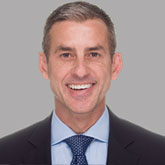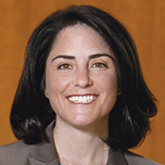How combating physician burnout is vital for the well-being of physicians, health systems & the patients they serve
Nearly half of doctors in the U.S. report feeling burned out, according to a 2020 survey conducted by Medscape. There are many causes of physician burnout, but the effects are undeniable—and can even be a matter of life and death. So it’s crucial for healthcare facilities to prioritize the psychological well-being of their doctors.

“An energized, engaged and resilient physician workforce is essential to achieving national health goals,” says Patrice A. Harris, M.D., MA, President of the American Medical Association (AMA). “Given the link between physician dissatisfaction and quality problems, an ounce of prevention is worth a pound of cure.”
Extinguishing factors
Burnout can be defined as the long-term stress reaction of emotional exhaustion and depersonalization. Burnout rates differ across specialties—they’re highest in urology, neurology and nephrology, while they’re lowest in public health and preventative medicine, ophthalmology and orthopedics.
Despite these variations, burnout is a factor across the board, and while there have been improvements in recent years, it remains a significant issue. It’s of particular concern today for physicians in those areas of the country hit hardest by the COVID-19 pandemic.
Physician burnout doesn’t have a single cause. Dr. Harris says major drivers of physician burnout include burdensome governmental regulations, environmental barriers to providing high-quality care, unsupportive leadership teams and the fact that insurers do not always cover medically necessary services.

Primary contributing factors also may encompass the loss of physician autonomy, an ever-demanding work pace and multiple oversight entities that demand quality measures—although these measures don’t always prove valuable when it comes to patient outcomes. The burden of electronic health records (EHR) is a factor that Christopher Ott, M.D., FACEP, Chief Medical Officer with HCA Healthcare’s Physician Services Group, shares is significant.
“When a physician spends five minutes with the patient and 30 minutes on a computer, that’s not a good use of the physician’s time,” Dr. Ott says.
A culture of negativity has an impact as well. Dr. Ott says that the feedback physicians receive is often negative— doctors who are successfully managing their patients don’t typically hear about that from leadership. Instead, they hear about their infection rates or failure rates for certain surgeries. The data is mostly quantitative, and the physicians have a limited voice.

Amy Frieman, M.D., MBA, FAAHPM, Chief Wellness Officer at Hackensack Meridian Health in New Jersey, explains that this problem is compounded by the fact that doctors often don’t feel comfortable pursuing mental healthcare. For example, every time physicians complete a credentialing or relicensure form, they’re asked questions about whether they have any mental health diagnoses and are seeking treatment.
“Those are things that really discourage clinicians from coming forward to seek help,” Dr. Frieman says. “But there is a push to start making some regulatory changes around those issues.”
Scorching consequences
The effects of physician burnout are significant and far-reaching. Dr. Ott notes that doctors who are burned out are at higher risk of making clinical errors. Indeed, research shows overburdened physicians reduce the amount of time they devote to their clinical work, and some even leave medicine altogether. A 2019 study conducted by the Association of American Medical Colleges (AAMC) predicts that the U.S. will face a shortage of between 46,900 and 121,900 physicians by 2032.
In addition to the emotional and physical toll of burnout, it’s driving physicians to retire earlier. This is contributing to the increasing shortage of physicians in this country.
Physician burnout can have a ripple effect on their entire team—the nursing and operational staff are likely to suffer as well. “As a result, patients have longer wait periods to see their doctor, or, worse yet, lose their trusted physician altogether,” adds Dr. Harris.
The problem can be more devastating, leading to alcohol and drug abuse—or worse as doctors in the U.S. have twice the rate of suicide as the general population.
Research from the American Foundation for Suicide Prevention (AFSP) found that 28% of medical residents experience a major depressive episode during their training, while 23% of interns report having suicidal thoughts.
“As we go through medical training and into practice, many physicians are unfortunately touched by the suicide of a colleague or a fellow trainee,” Dr. Frieman adds.
Although the numbers from the AFSP are alarming, research has shown mental health interventions can make a difference—suicidal ideas decreased by 50% in interns who completed just four online sessions of cognitive behavioral therapy (CBT).
“There are resources out there, and it’s critically important that we recognize these kinds of issues before they escalate to losing physicians from suicide,” Dr. Frieman says. “It’s a very real issue and something we shouldn’t ignore.”
Sparking solutions
In addition to offering mental health services, medical institutions can protect the well-being of physicians, fellows, residents and interns in many ways.
Monitor the burden. One crucial strategy is monitoring high-volume operators—physicians who manage a significant number of procedures or patient encounters.
Early in their careers, this may be driven by a desire to grow their practice and maximize earning potential. But over time, this can lead to exhaustion and unpredictable mistakes that aren’t readily apparent to the physician.
Experts suggest being on the lookout for sudden and uncharacteristic behavioral changes is key. Also, make sure physicians understand their system’s leadership structure and know the appropriate communication channels for discussing any issues.
It’s important to foster collegial empathy and provide positive feedback, too. Outside of their practice, you never know what is going on in their personal life that may also be contributing to changes in behavior and signs of burnout. Start with open-ended questions first, then gently lead into the physician practice concerns that are evident. The conversation should always be about what’s best for the physician and not seen as punitive.
Dr. Frieman believes it’s also important for the leadership within an organization to closely track burnout. “We need to have measures of clinician well-being on our dashboards alongside our operational and quality metrics,” she says. “We really should be measuring this and have leadership accountability for it at the highest levels.”
Reduce the red tape. Institutional changes are an instrumental solution. Leadership should optimize physicians’ overall workflow, progress toward an efficient EHR system, and reduce physicians’ responsibility for the operational, bureaucratic side of medicine—things like excessive paperwork, billing and coding.
“The physician should be able to show up, practice care, document, move on and not worry about whether the lights are on,” Dr. Ott says. “That is not why doctors go into medicine.”
Invest in wellness. Instituting a wellness advocacy group or similar program can be an effective strategy. And wellness should be a consideration in all aspects of hospital operations. “All hospital committees should be cognizant of the negative impacts their decisions could have on physician and advanced-practice provider wellness,” Dr. Ott says.
Health systems can also consider adjusting physicians’ schedules. Several studies have shown limiting the number of working hours, modifying work schedules or promoting time-banking (through activities such as teaching and mentorship) can have a positive impact on physician well-being.
Fanning the flame
While the U.S. still has substantial room for improvement when it comes to remedying physician burnout, some significant strides have been made in the past few years. A recent study conducted by the AMA, the Mayo Clinic and the Stanford University School of Medicine looked at how many doctors exhibited at least one symptom of burnout.
After steadily increasing to 54.4% in 2014, the burnout rate decreased to 43.9% in 2017. Medscape’s recent survey found that burnout rates in the U.S. decreased from 46% in 2015 to 42% in 2020.
“The progress we’ve seen in reducing burnout in the U.S. physician workforce suggests that growing national efforts are on the right track,” Dr. Harris says. “But more work is needed to achieve meaningful change.”
Share Email Employee Retention, Q2 2020




